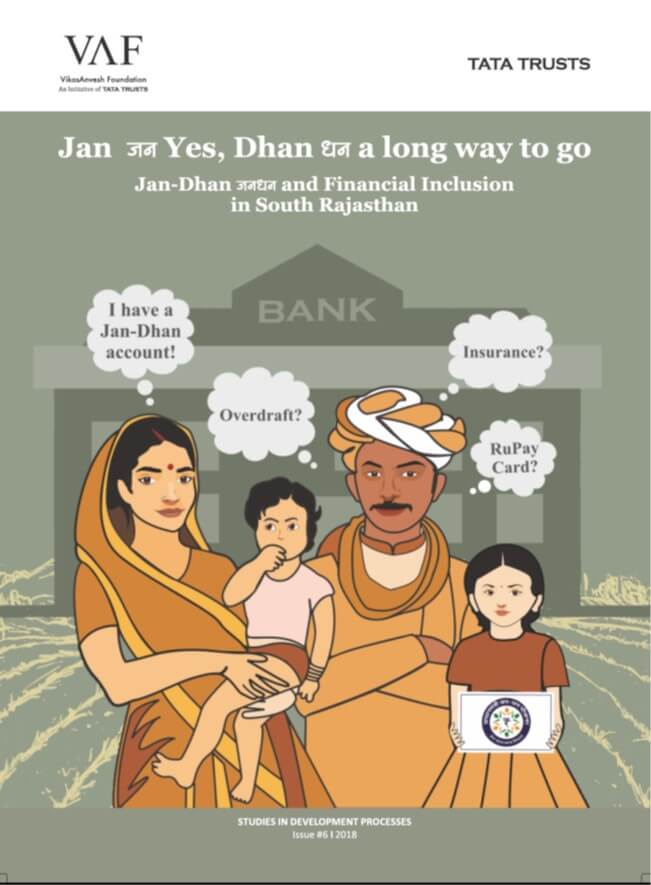On August 15, 2014, the prime minister announced a new initiative called Jan-Dhan Yojana to bring about comprehensive financial inclusion to all the households in the country. A massive drive was undertaken across the country to educate citizens – especially those who had never held a bank account – and encourage them to open one. The scheme implemented in a mission mode, was hailed as the largest financial inclusion programme initiated anywhere in the world. This paper examines the status of financial inclusion as reflected in opening of bank accounts in villages of southern Rajasthan. We also evaluate the state of account usage and other benefits such as RuPay cards, overdraft facility and insurance, designed under Pradhan Mantri Jan-Dhan Yojana (PMJDY) scheme.
The study was conducted in February 2018, in 57 villages spread across five districts of Rajasthan. The data from the survey of over 950 individuals shows a tremendous increase from about 50% to over 90% individuals holding bank accounts since the launch of Jan-Dhan scheme. Jan-Dhan, Aadhaar and Mobile linkage (JAM) platform, seen as a strategy/technological solution to leverage the potential utility of bank accounts has also been successful with over 90% of the accounts linked to Aadhaar and over 62% of the accounts linked to mobile number. However, the penetration of other benefits such as RuPay card, insurance and overdraft facility has remained low. Further, there has been a significant difference in the usage of accounts between pre-Jan-Dhan account holders and post-Jan-Dhan account holders, with respect to frequency of access, owning RuPay card and enrollment for insurance. The study indicates that the first step to formalise the informal economic system has been successful but the realisation of potential utilities ranging from credits, insurance, debit cards, etc., needs various interventions. It is essential to continue the momentum gained by Jan-Dhan phase 1 to Jan-Dhan phase 2 so as to focus again on financial literacy and also encompass livelihood activities that would strengthen local economy and generate new sources of revenues that then would be routed through the formal banking system.

